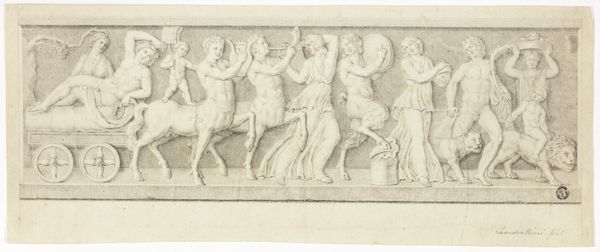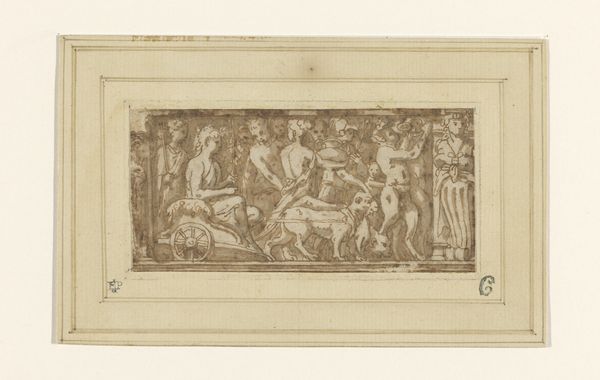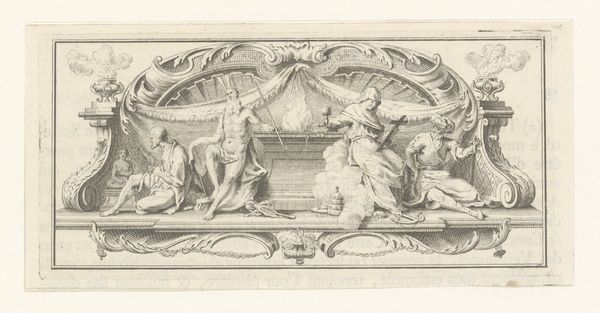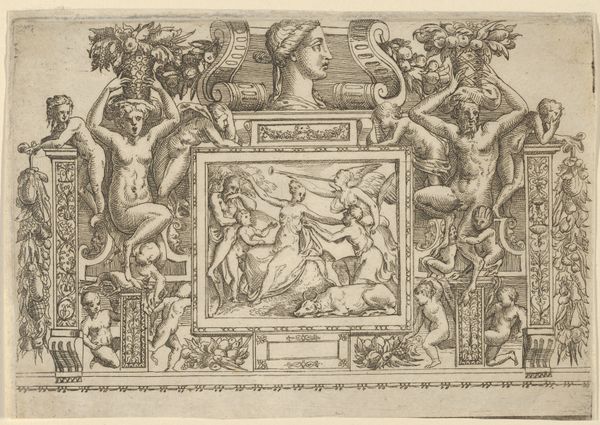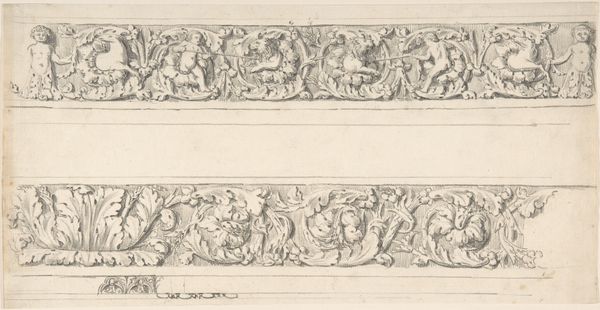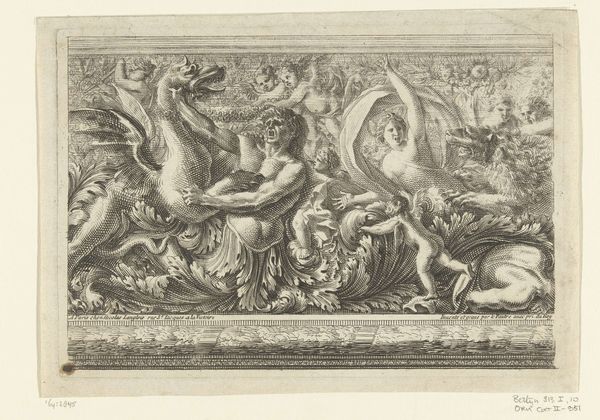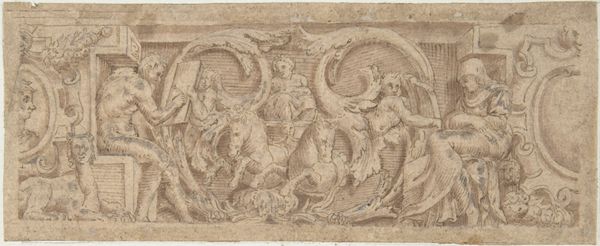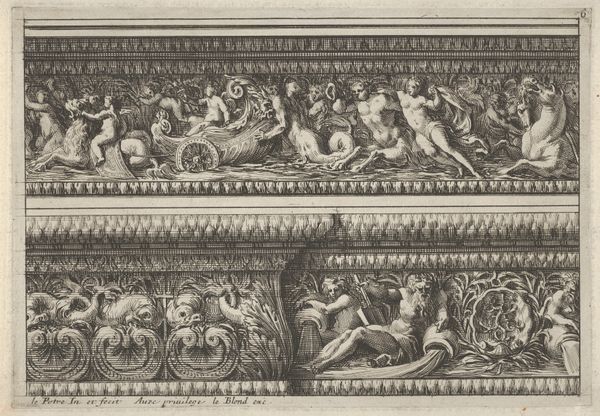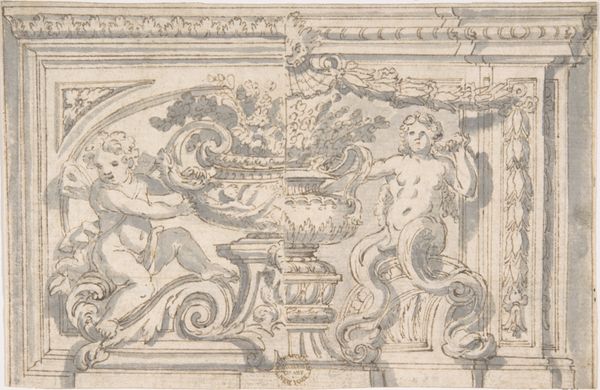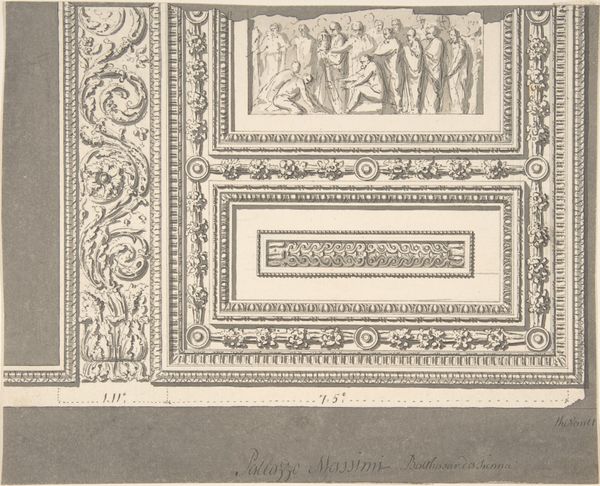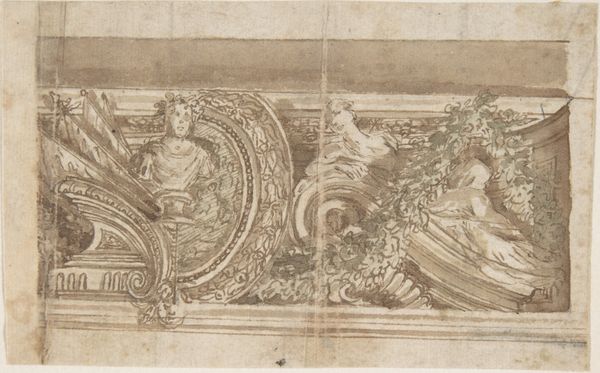
drawing, carving, relief, ink
#
drawing
#
carving
#
relief
#
classical-realism
#
figuration
#
11_renaissance
#
ink
Dimensions: height 195 mm, width 565 mm
Copyright: Rijks Museum: Open Domain
Curator: This is "Fries met putti en dieren", or "Frieze with Putti and Animals," dating from between 1768 and 1786. It’s a drawing rendered in ink, meant to evoke the effect of a carved relief. Editor: The linear quality gives it a restrained elegance. I notice how the sepia ink unifies the forms—figures, foliage, the ornate border—creating a harmonious flow across the entire frieze. It almost seems to dance before your eyes. Curator: The continuous narrative definitely invites that sort of sweeping, continuous reading. Note the recurrence of putti alongside various animals, likely symbolizing different virtues or perhaps echoing popular allegories from the period. It speaks to a desire to embody a harmonious relationship between mankind and the natural world. Editor: The use of line weight also provides a beautiful structure, wouldn't you say? Thick lines delineate the figures, bringing them forward, while delicate strokes render the foliage, giving depth. Look at how the consistent directional strokes bring cohesion to the whole work, mimicking the direction a chisel might move when sculpting. Curator: The image clearly references classical motifs, like the putti that evolved out of depictions of Eros. However, there’s a playful quality here too; they aren’t enacting any heroic scene but instead seem to interact casually with the animals. This points to the 18th-century re-engagement with antiquity that incorporated a lighter touch. Editor: I wonder about its intended context. Was it a design for a sculptural program or something intended as autonomous work? The interplay of light and shadow that's achieved simply through line is fascinating; in this way, the drawing possesses a sculptural sensibility of its own. Curator: I see this piece as speaking to its era, where the embrace of classical forms didn't require abandoning playfulness or personalized expression. It hints at a period that desired both refinement and ease. Editor: I agree entirely; it’s an object that carries classical and original qualities in a compelling equilibrium. It has structure but also whimsy.
Comments
No comments
Be the first to comment and join the conversation on the ultimate creative platform.
